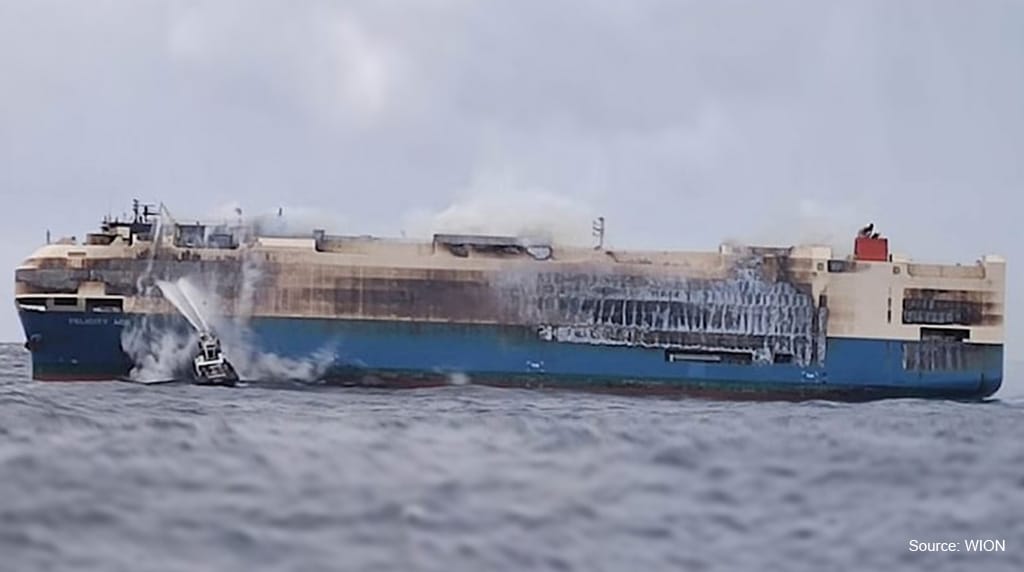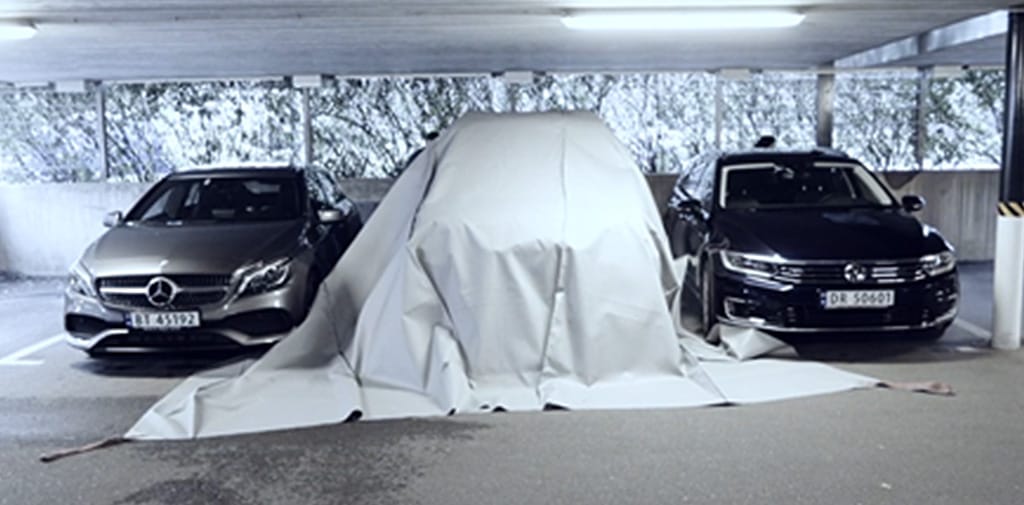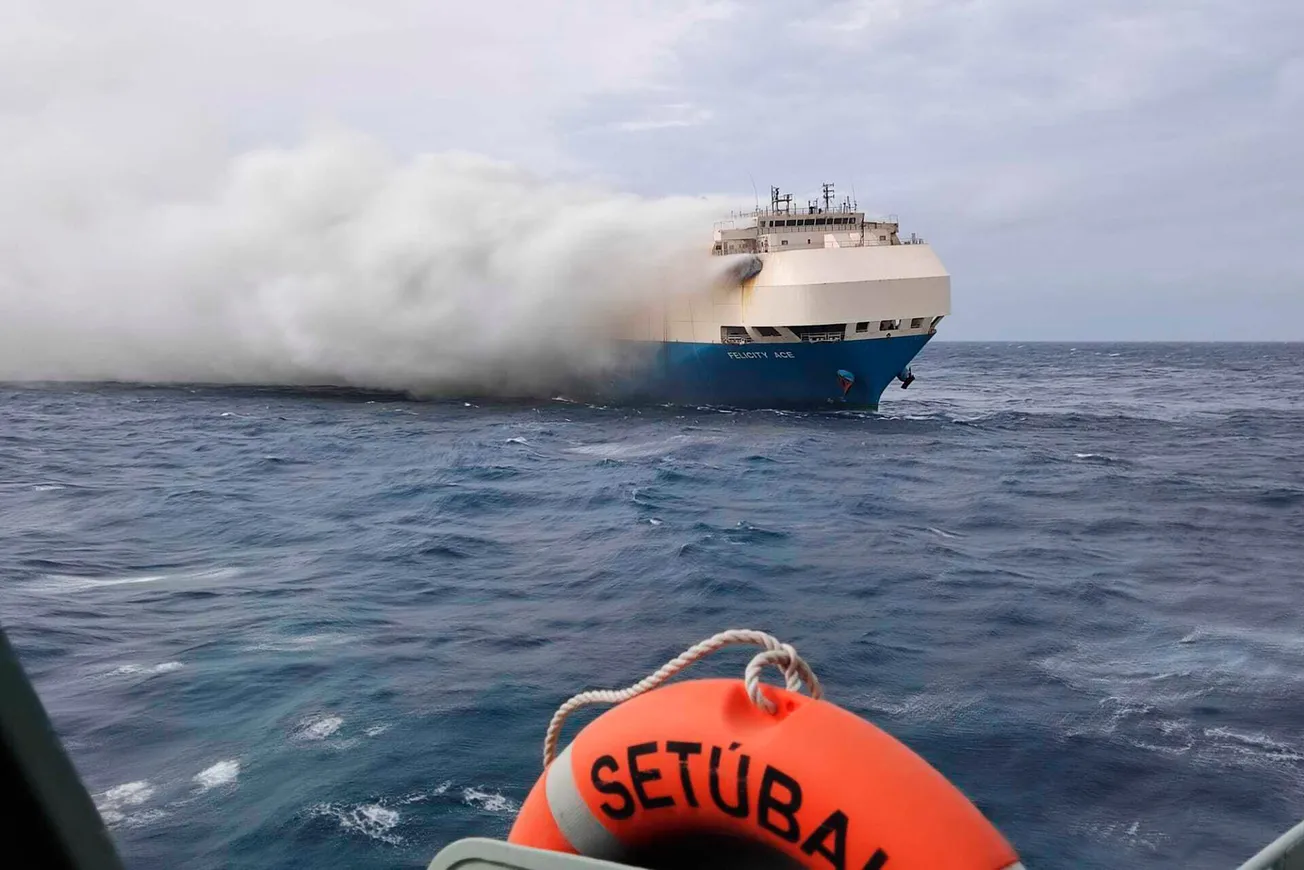Presumably, Julius was spurring his legions on to victory in Britain so the inspirational quote is probably not quite what those shipping a boatload of EVs had in mind. Losses on this trip include:
- 1 x car carrier Felicity Ace
- 4000 Volkswagens, 1000 of which were EVs
- 189 Bentleys
- 1100 Porsches
- Numerous Audis

Vehicles on these car carriers are parked 50 cm apart so once the fire starts there is no stopping it and they certainly cannot move the rest of the cargo out of the way while the original car burns quietly in the corner.
The burning EV batteries can reach temperatures of 2700°C, twice the temperature at which steel begins to melt (1371-1540°C).
But, hey, this is only the fourth vessel destroyed by EV fires since 2019 – we have plenty more!
- Felicity Ace
- Grande America, a roll-on roll-off vessel with more than 2000 new and used vehicles on board, sank in the Bay of Biscay after the cars ignited. The crew of 26 tried to combat the fire but, within hours, the heat was so intense that it weakened the structural integrity of the ship’s bulkheads and hull. There was little that any of the crew members could do but abandon ship.
- Two other vessels reported car fires including a Mitsui OSK Lines car transport carrying 3500 Nissan vehicles, which led to the death of five crew members and severe damage to the vessel and cargo.
So, still keen to use the Interislander or Bluebridge to cross Cook Strait knowing that they allow EVs to park alongside your ‘pride and joy’?
According to various sources, the damage bill for a car catching fire on a ship is massive:
Value of the cars lost: $400 million
Cost of lost sales: $155 million
Cost of the vessel: $100 million
Cost of salvage: $150 million
One possible solution would be to cover each EV with a special fire-proof blanket at the time an EV is being loaded and tied down to the car deck.
These would have the fire retardant qualities along the lines of those used by Bridgehill car fire blankets which in normal use are unfolded and dragged over burning cars thus containing the fire under the cover.
Some car carriers and ferry operators have already begun equipping their vessels with these blankets. […]
[…] These blankets not only starve the fire of oxygen but they prevent reignition of the battery.
This solution would add serious cost to the loading and unloading of cars but it might prove to be the only solution at this point to preventing the catastrophic maritime losses being experienced so far.
GoAuto

Stuart Coulton, manager – fire products at PT Rescue in Melbourne told GoAutoNews Premium that in addition to the intense heat and toxic fumes from thermal runaway EV fires, there was a serious issue of battery re-ignition which had human safety and property damage implications for those who store EVs awaiting repair.
PT Rescue distributes Bridgehill car fire blankets which are unfolded and dragged over burning cars thus containing the fire under the cover. The blankets are made from similar material to that used on space vehicles to protect them from the intense heat generated on re-entry into earth’s atmosphere. Standard blankets are suitable for a single use while advanced blankets can be reused up to 30 times.
Mr Coulton said that the blankets were suitable for car dealerships, car repair shops, car service workshops, EV charging facilities, car ferries, road tunnel operators (where toxic fumes are especially a danger), tow truck operators, and vehicle scrap yards.
GoAuto
Oh, and don’t worry about all the toxic fumes released into the atmosphere and the toxic chemicals running into the ocean, it all happened “outside the environment, totally beyond the environment”.
UPDATE:
While under tow, the Felicity Ace sunk to the bottom of the ocean, about 220 nautical miles off the coast of Portugal’s Azores Islands, around 0900 local time 1 March. The Bentleys and Lamborghinis are now under approx 3000 m of sea.









